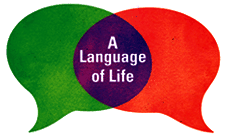Practice the best 3 techniques of communication with your colleagues, employees, team to avoid staff conflicts, improving interactions and relationships at work.
Do you feel like what you say is not really heard?
– Learn Nonviolent Communication skills. To avoid and solve inter-personal conflicts.
Developed by the esteemed American physiologist Marshal Rosenberg in the 1960s. Nonviolent Communication (NVC) is a process which aims to help and support on three interconnected levels:
- within yourself
- between others
- within groups and social systems.
- Select Thrill team development facilitators and staff trainers to train your staff in communication skills.
- Thrill trainers help prevent conflicts by utilsing Marshal Rosenberg’s techniques on how to resolve conflict in non-violent ways.

Marshall-Rosenberg
“Nonviolent Communication is the combination of language, way of thinking, communication skills and means of influence that serve my desire to do three things: 1. Free myself from cultural conditioning that is at odds with how I want to live my life; 2. To acquire the power to connect with myself and others in a way that allows me to give naturally from my heart; 3. To acquire the power to create structures that support that way of giving.”
Marshal Rosenberg
3 Big Figures Influences
Nonviolent Communication was born out of Marshal Rosenberg’s research, analysis and studies, and with this help of 3 major influences: Carl Rogers, one of Marshal Rosenberg’s teacher, because of his person-centered approach, Gandhi with the expression “non-violent” to express the fact of communicating with the other without harming them, and finally, NVC is also inspired from Manfred Max-Neef, Chilean economist, who analyzed human needs.
Focus on the 3 key staff communication aspects
- Self-empathy: awareness of your experience
- Empathy: understand of the other
- Honest self-expression: expression that inspires compassion in others
How Non Violent Communication works for Employees self improvement, Understanding and discovery.
- Observation -> what are you seeing, touching, hearing without evaluating or judging it (A)
- Feeling -> what does it create inside you, what emotion without adding a story or thoughts to it (B)
- Needs -> what do you desire without thinking of a strategy to get there (C)
- Request -> what specific action would you like to ask without demanding it (D)
Example: When you do A, I feel B, because I want C. I would really appreciate it if we can work towards goal D.
The process requires listening carefully.
Knowing or understanding how you feel and what you need. It is a learning process that not all of us have developed as children. But it can be learned now! With guidance, regular practice and small exercises. Nonviolent communication can become a natural process for you. Positive impacts on yourself, your mental health and your staff’s inter relationships.
“When you talk about Team Building events, I am curious and excited to do one with my team, because I want to share a good and fun moment with them. We appreciate if you would be willing to organise our staff communication training for us, during these Covid times and stresses.
Custom designed messages and enquiries click HERE.
Let’s improve your business communication by focusing on staff 1st.



